We generally provide seed for the usual feeders: a couple for sunflower seeds and safflower seeds and a few for thistle seeds (depending on the number of finches for any given year).
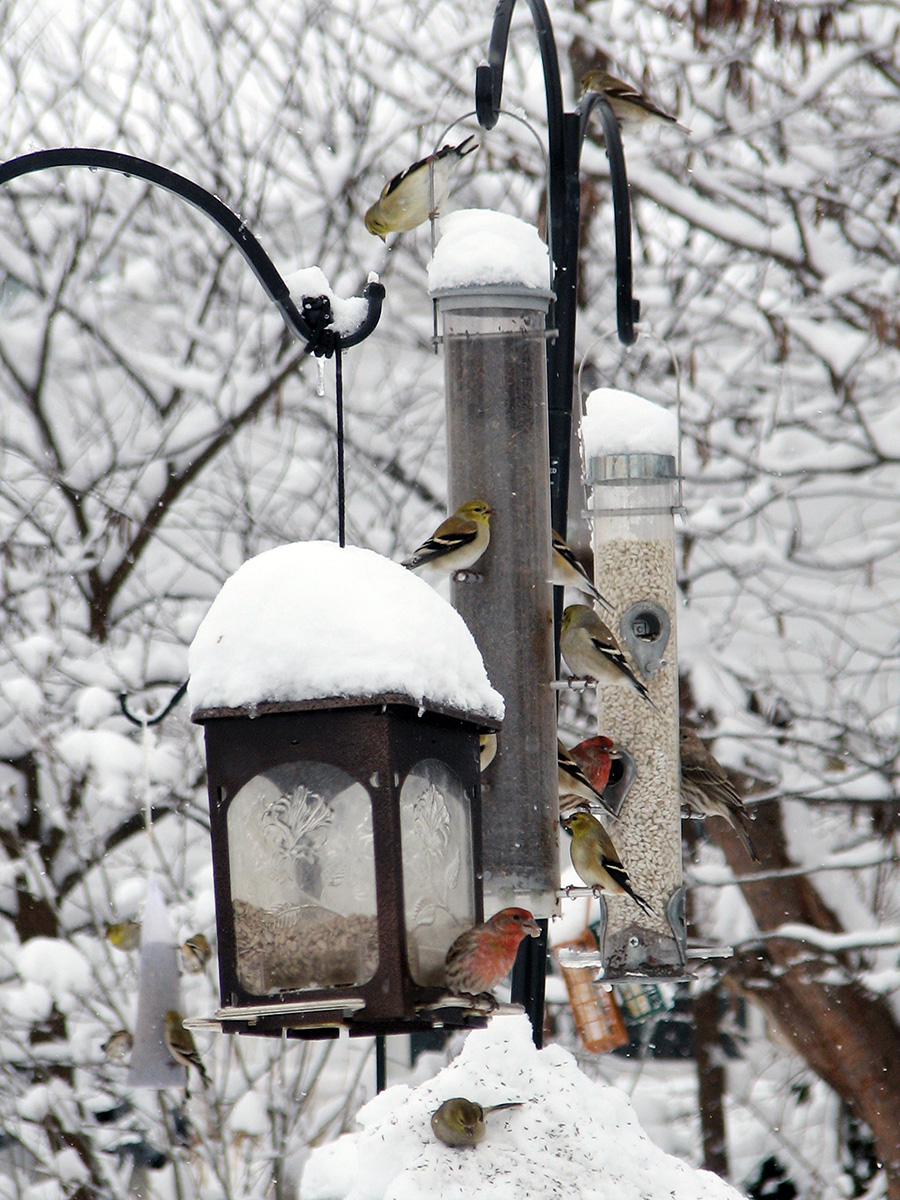
It’s fun to watch birds at feeders, and we like to provide the little extra food that will get them through the year. We provide fewer seeds in the summer months, though. There’s plenty of food around — especially in our yard!
Keeping feeders clean
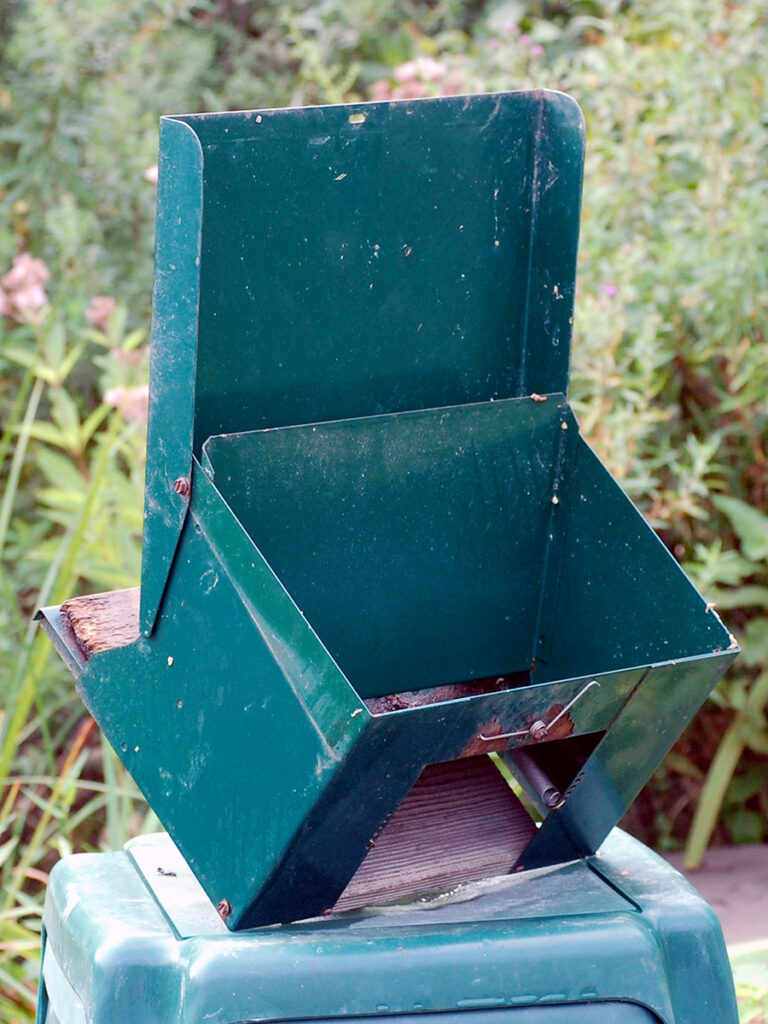
Dirty feeders can make birds sick, especially in chilly winter weather, so we clean our feeders in a light bleach-water solution. (See the Resources section below for expert advice from the Lab of Ornithology.)
It’s easy in the summer when we can do this outside, but in the winter, we wash them in the washer tubs in the cellar. After rinsing thoroughly, we let them air-dry before filling them.
After a few years, we realized we could save ourselves a lot of work by choosing feeders that are easy to clean, a feature we look for now.
And the ground underneath
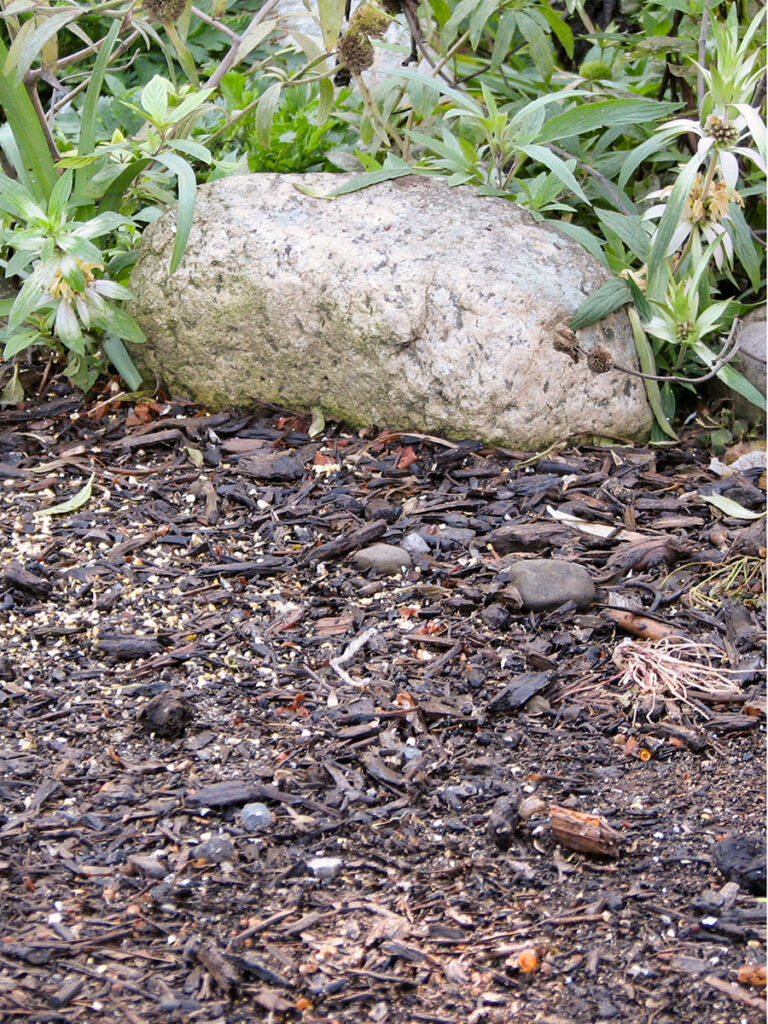
We also try to keep the ground under the feeders clean by raking up any seeds that might get moldy. We’ve found it’s easier to get seeds without hulls. There’s less waste, less mess, and less stuff getting moldy under the feeders.
This is especially important in spring when the snow finally melts, revealing a layer of seed that has been hidden for months.
Squirrels and feeders
Squirrels can be a problem with feeders. It’s not that we have anything against squirrels, but there are so many of them! I haven’t investigated the science on this, but I suspect that, like deer, their population is out of balance with the resources available. And I especially hate to see them eating our shrubs’ berries, which are intended for birds.
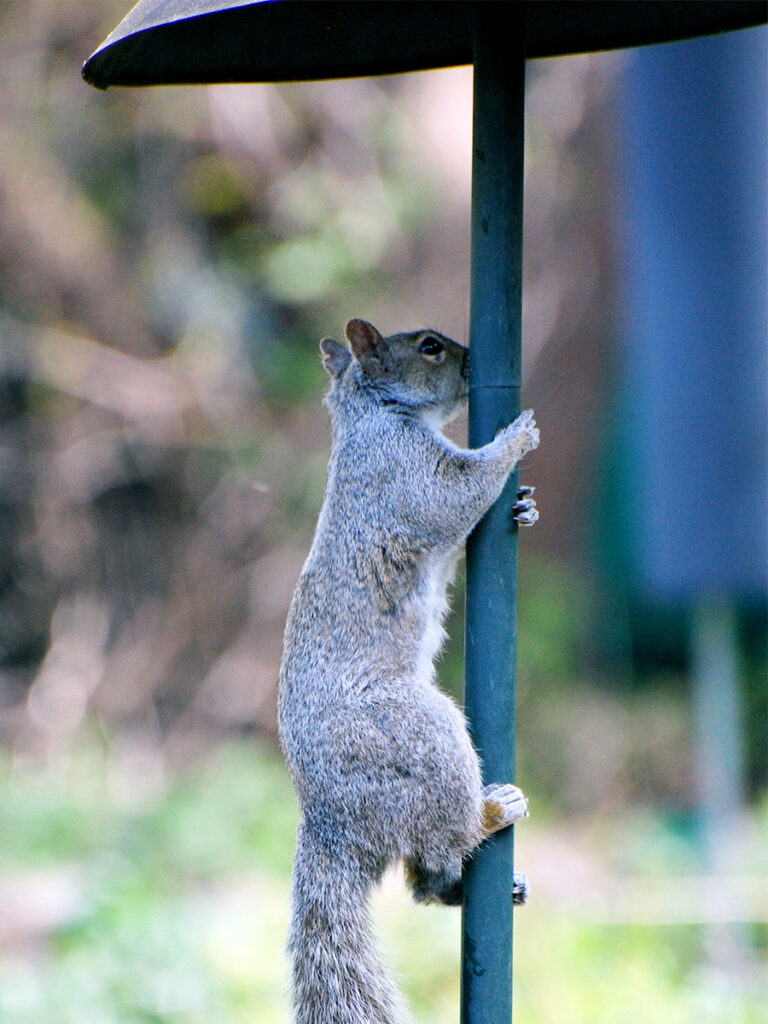
One thing that works well to protect our feeders is to have a baffle on the feeder posts. We use both the stovepipe style and the circular kind, and both types seem to be effective. (We also put them on bird house posts to protect babies from predation.)
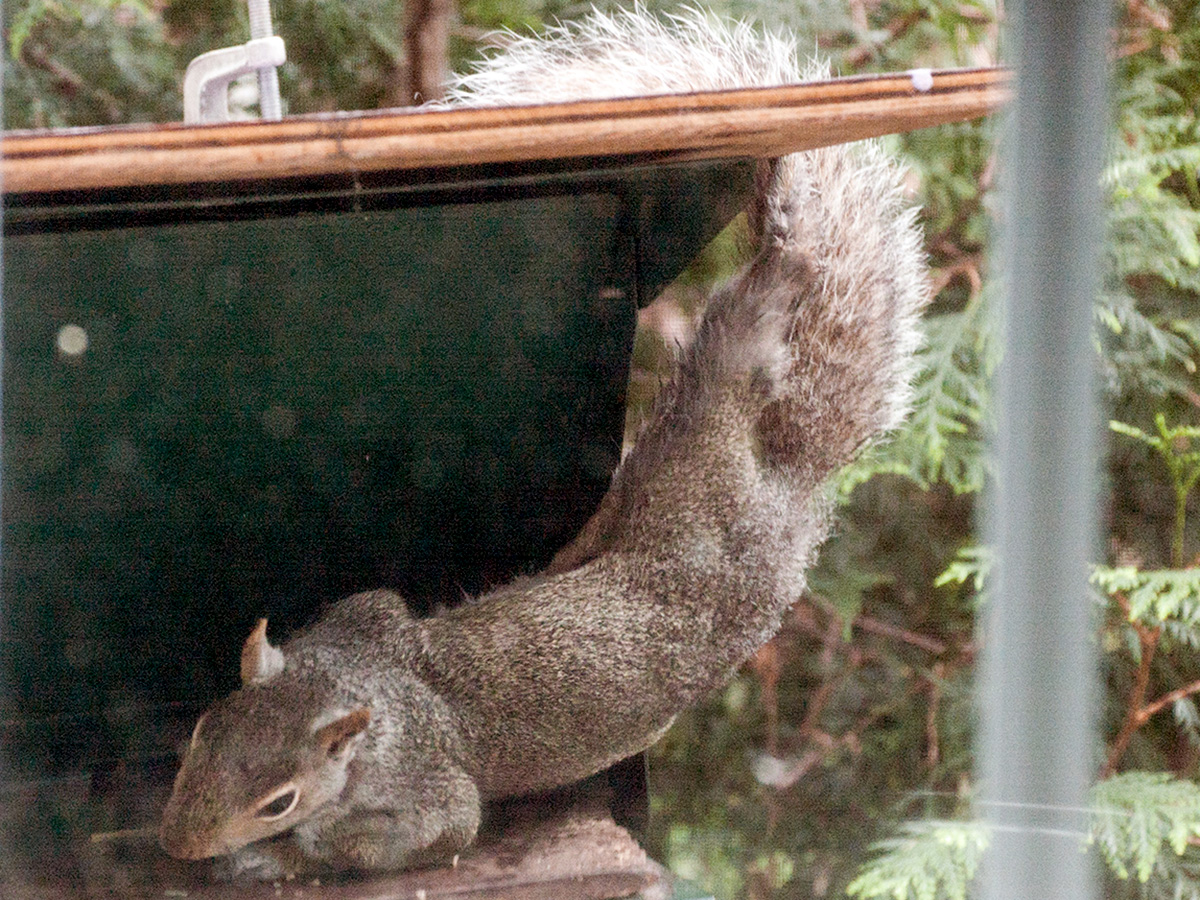
Initially, our weight-sensitive feeder worked pretty well, but the squirrels have outsmarted it. This wasn’t a problem in the past, but now our trees are close enough that they can leap from the trees onto the feeder. Even more annoying, they ricochet off our window screen onto the feeder. And they learned to hold on to the feeder top with their toes so they don’t trip the weight bar!
Part of me says that if they’re willing to work so hard, let them have the seed. But — besides the fact that seed is pretty expensive and squirrels are insatiable — they scare the birds away. We’ve stopped using this feeder.
Natural sources of seed
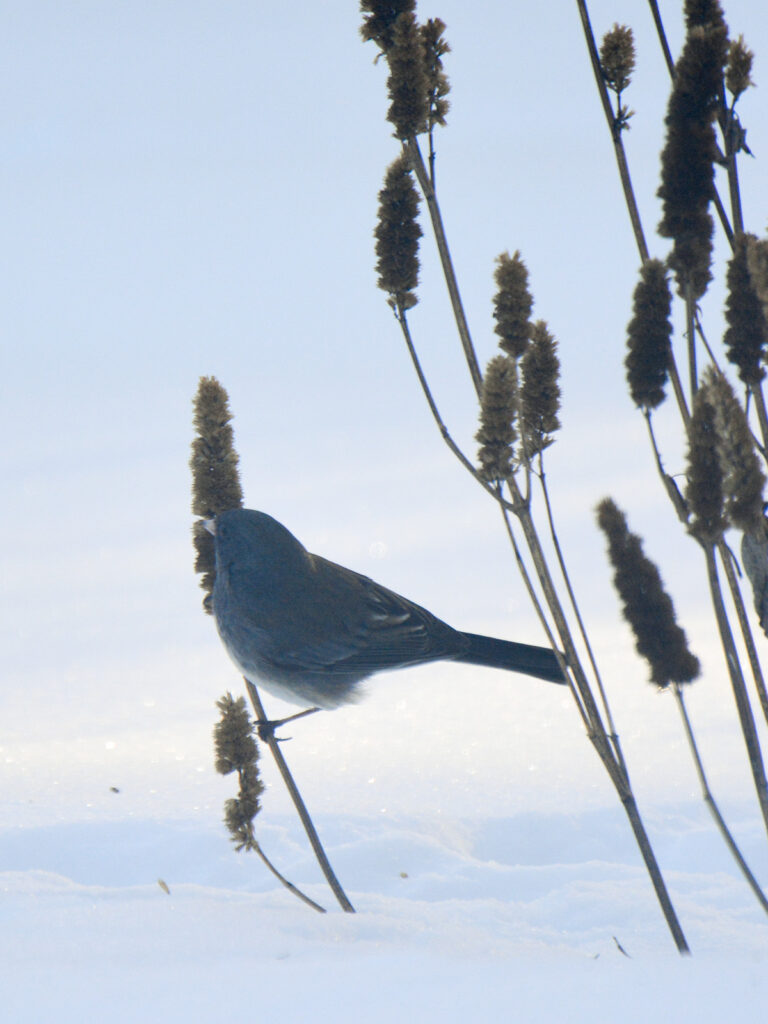
Not all seed comes in a plastic bag! We increasingly focus on providing natural sources of seed.
We leave our native grasses and wildflower seedheads standing throughout the winter. Not only does it make good bird food, but it’s also much more interesting to look at than just snow.
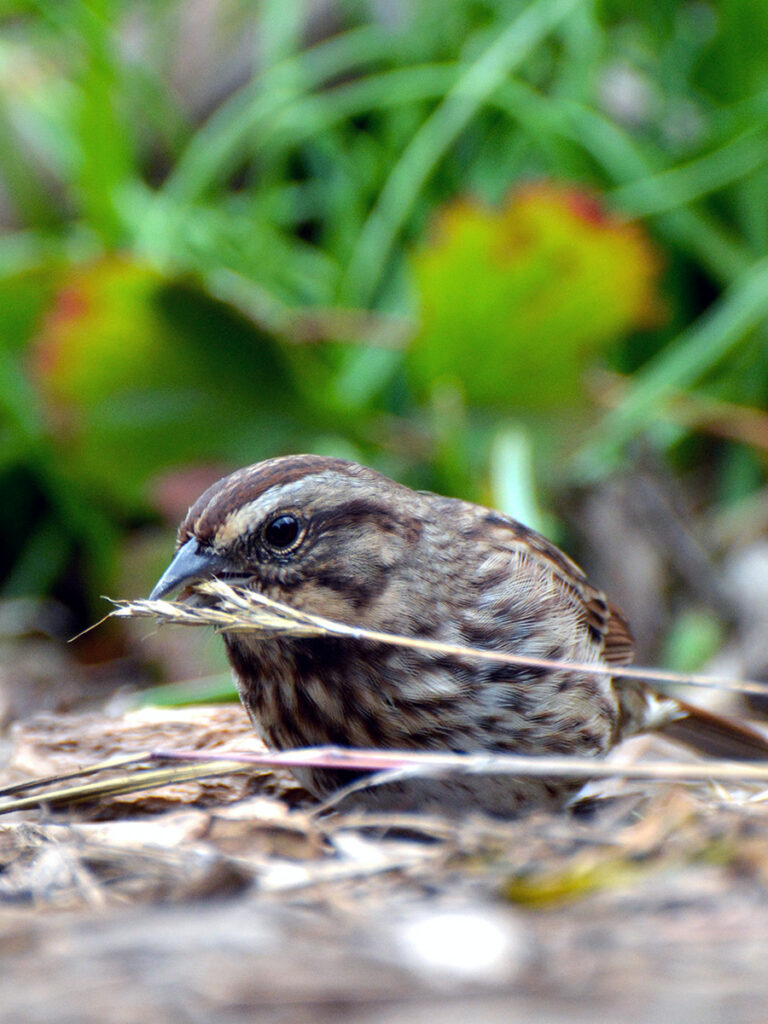
This song sparrow is enjoying the native grass seeds in our back yard.
We leave these seeds throughout the winter. It’s easy to break off the dried grass stalks in the spring if we need to clean up the area a bit. BUT we wait until the temperatures warm up in the spring so we don’t disturb any insects that may be overwintering there.
Besides being a wonderful nectar plant in the summer and fall, hyssop (Agastache foeniculum) provides seeds for birds. Goldfinches (an almost solely vegetarian bird) can hardly wait, even when the seeds are barely ready. And, of course, they love them when the seeds are ripe.
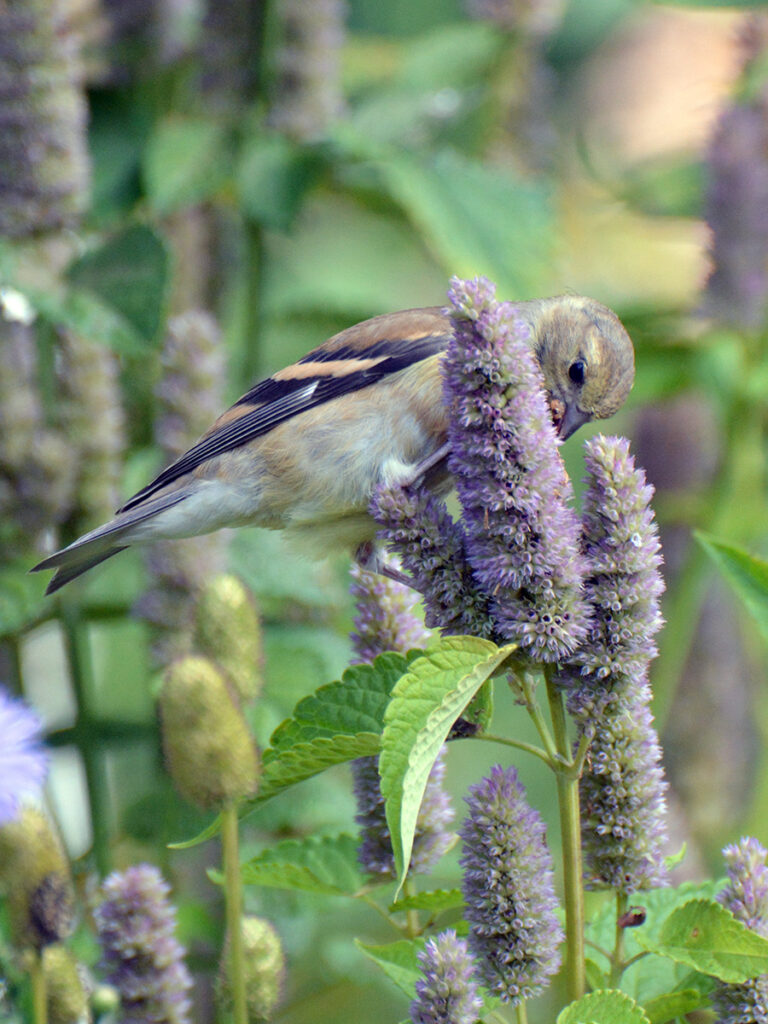
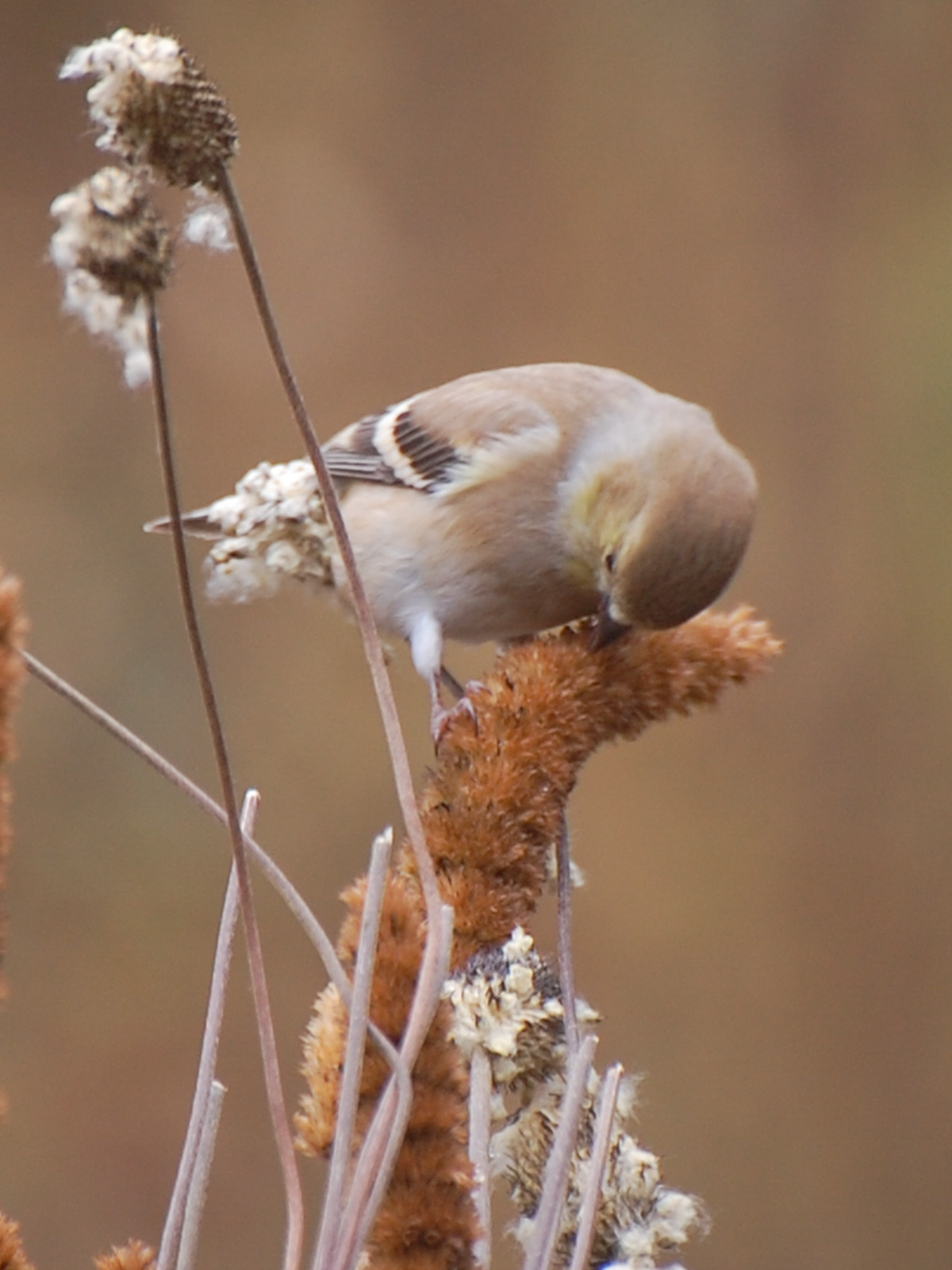
Other seeds
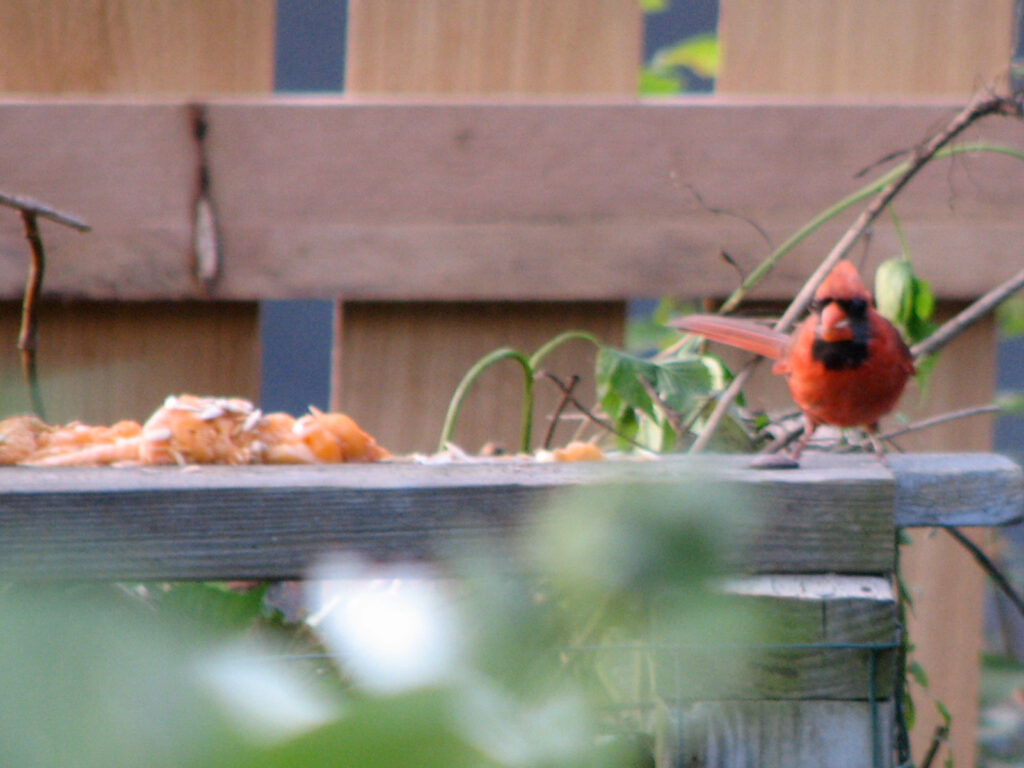
When we prepare cantaloupe, we save the seeds and put them out for the birds. The cardinals seem to especially like them. We used to put out winter squash seeds, too, until we discovered how delicious they are when roasted. Now we understand why the squirrels ate them so eagerly!
Seeds for squirrels
After Halloween, we grab a few intact pumpkins people put out at the curb. The first year, I struggled to cut them in half, but then I discovered squirrels can do the job themselves.
I usually don’t encourage squirrels to come to my yard, but adding pumpkins doesn’t seem to increase the numbers we normally get, and it keeps them occupied and away from the bird feeders.
(And I admit that it’s fun to watch them get the pumpkin seeds.)
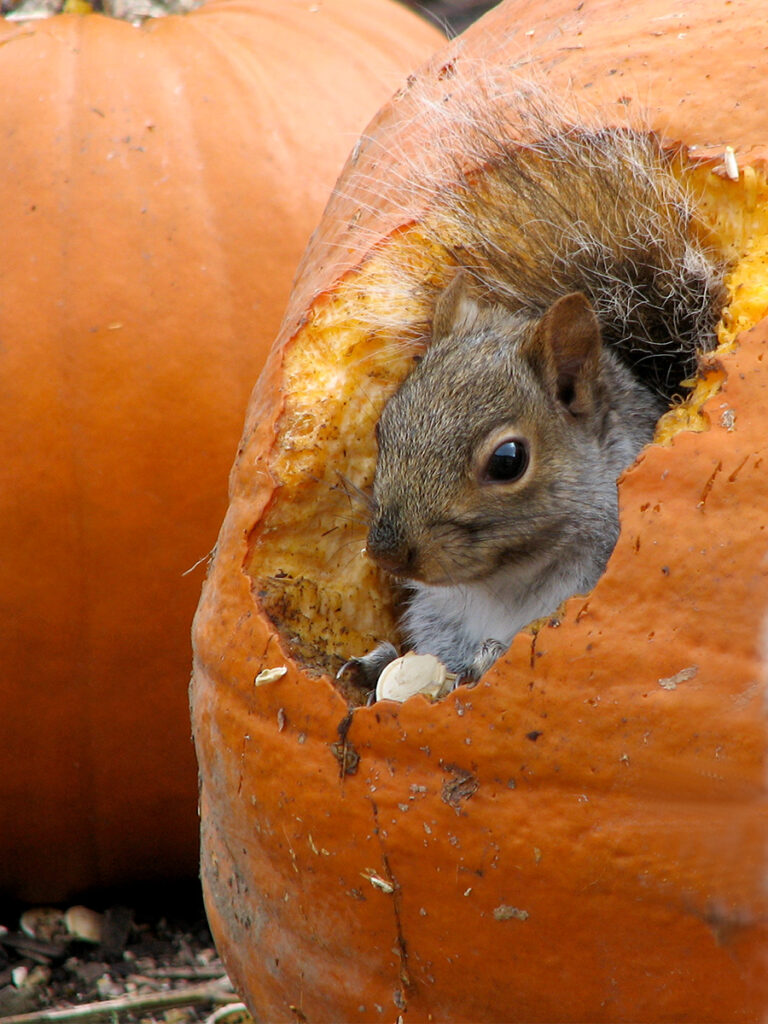
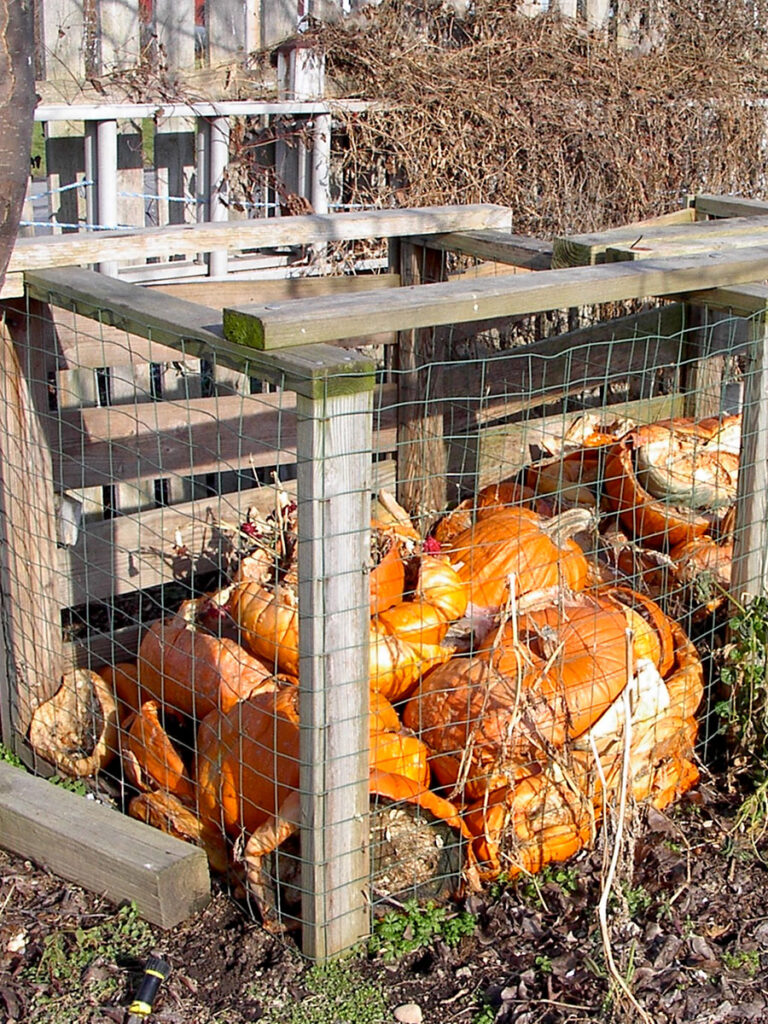
When the squirrels are done with them, the pumpkin carcasses go into the compost bin — much more satisfying than seeing them being picked up at the curb by the town’s big payloaders and trucks.
Resources
- Cornell Lab of Ornithology’s All About Birds:
- National Wildlife Federation:
- BBC News:
Reflections
Here is your country. Cherish these natural wonders, cherish the natural resources… the history… the romance, for your children and your children’s children. Do not let the selfish men or greedy interests skin your country of its beauty, its riches or its romance.
~ President Theodore Roosevelt
